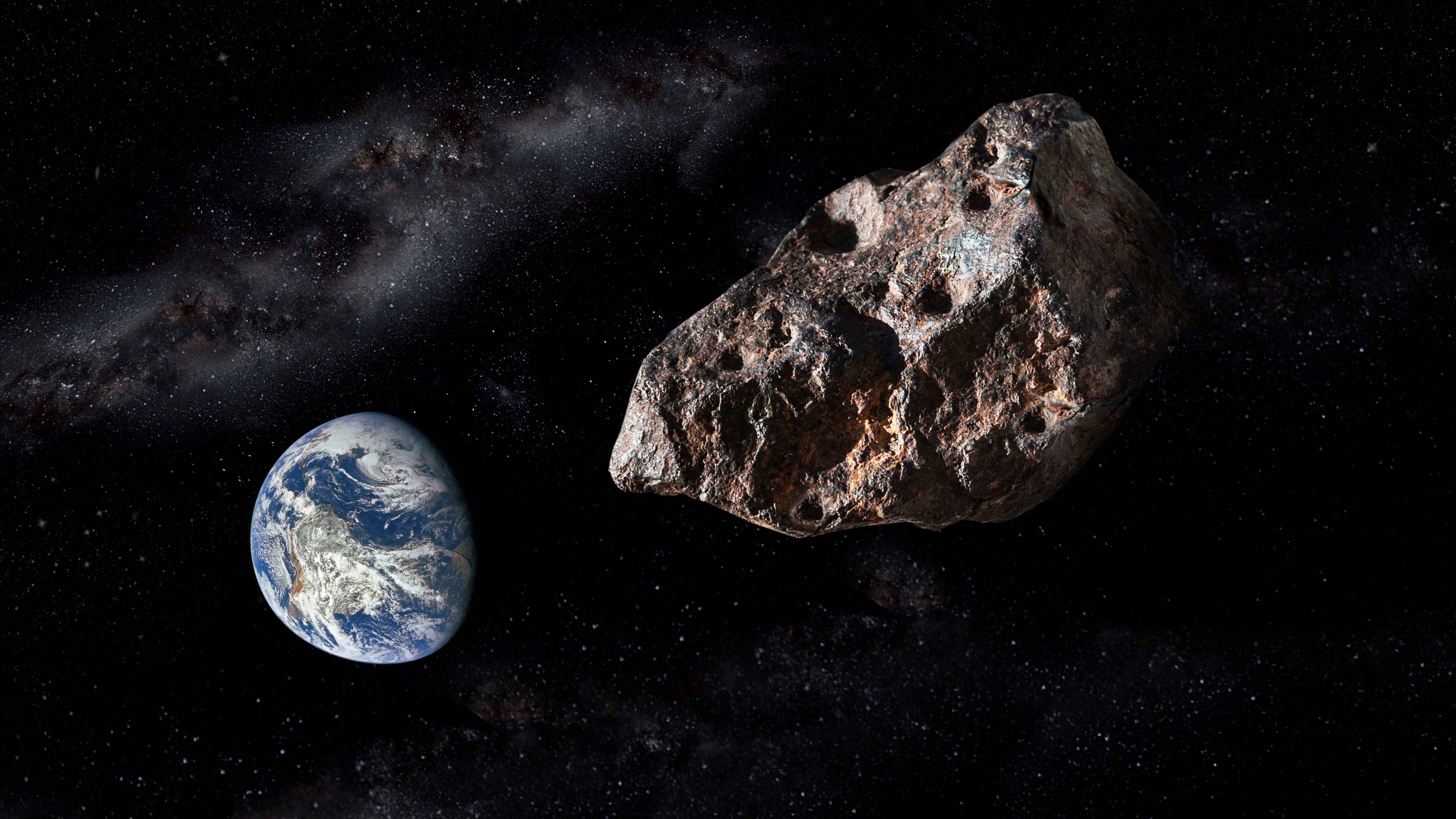'Potentially hazardous' asteroid worth nearly $5 billion will skim past Earth this week, NASA says
The asteroid is expected to pass by Earth without harm.

A gigantic, "potentially hazardous" space rock bigger than the Eiffel Tower will enter Earth’s orbital path on Dec. 11, according to NASA.
The egg-shaped asteroid, named 4660 Nereus, is 1,082 feet (330 meters) long and will break into Earth’s orbit traveling at 14,700 mph (23,700 km/h) on Saturday, Dec. 11. Thankfully for all of our weekend plans, the asteroid is expected to skim past Earth at some distance without making impact, but it will still be closer to us than it has been in 20 years.
Nereus — named after the Greek sea god who was the son of Gaia, the personification of the Earth — will be roughly 2.4 million miles away (3.86 million km), around 10 times the distance between Earth and the moon. This may sound like an enormous gap, but by cosmic standards, it’s actually a stone’s throw away.
Related: Top 10 ways to destroy Earth
NASA flags any space object that comes within 120 million miles (193 million kilometers) of Earth as a "near-Earth object" and any fast-moving object within 4.65 million miles (7.5 million km) as "potentially hazardous." Once flagged, astronomers closely monitor the objects, looking for any deviation from their predicted trajectory that could put them on a collision course with Earth.
First discovered in 1982, Nereus' 1.82-year orbit of the sun brings it close to Earth nearly every 10 years. Because Nereus visits our region of the solar system so frequently NASA and the Japanese space agency JAXA once considered collecting a sample from it using JAXA’s Hayabusa spacecraft, but the agencies eventually settled upon a different asteroid (25143 Itokawa) instead.
NASA projects that Nereus will make its next close approaches to Earth on March 2, 2031 and November 2050. An even closer, tantalizingly close visit is forecast to occur on Feb. 14, 2060, when Nereus may come within roughly 0.74 million miles (1.2 million km) of Earth. This will put the mineral-rich space rock at a tempting three moons distance from our planet.
Sign up for the Live Science daily newsletter now
Get the world’s most fascinating discoveries delivered straight to your inbox.
That's because beyond being a target for a potential robotic craft sent by NASA, Nereus is also an enticing prize for prospective space mining. Asterank, a database that monitors more than 600,000 asteroids, estimates that the asteroid has nickel, iron and cobalt deposits worth a collective $4.71 billion.
If we ever do spot an asteroid headed straight for us, space agencies are working on a solution. On Nov. 23, NASA launched a spacecraft as part of its Double Asteroid Redirection Test mission in order to redirect an asteroid by ramming it off course, Live Science previously reported. China is also in the early planning stages of an asteroid-ramming mission; they propose that by slamming 23 of their Long March 5 rockets into the asteroid Bennu, they would be able to divert it from a potentially catastrophic impact with Earth, Live Science previously reported.
Originally published on Live Science.

Ben Turner is a U.K. based staff writer at Live Science. He covers physics and astronomy, among other topics like tech and climate change. He graduated from University College London with a degree in particle physics before training as a journalist. When he's not writing, Ben enjoys reading literature, playing the guitar and embarrassing himself with chess.









